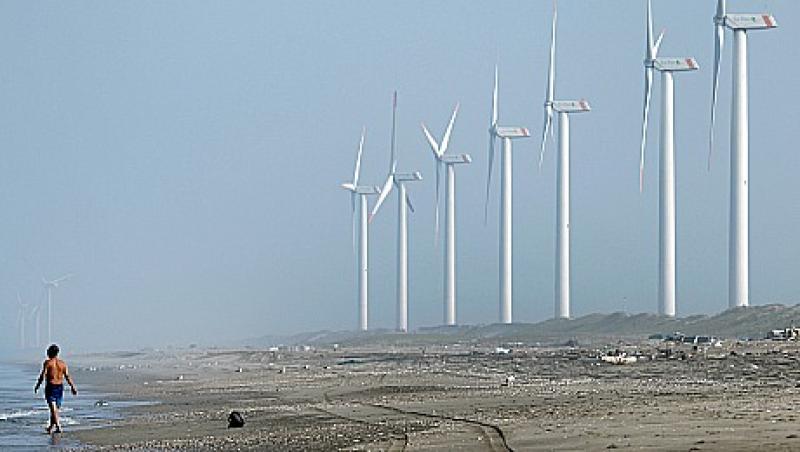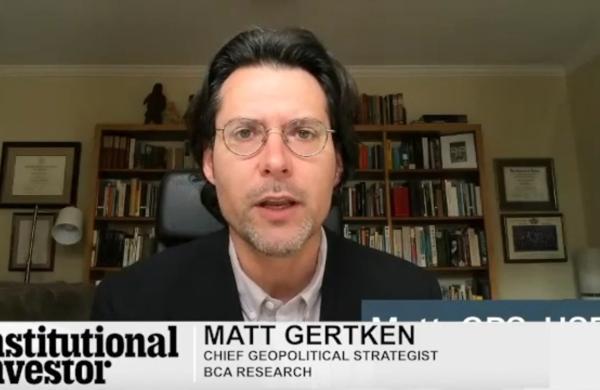From how we pay for our morning coffee to the make-up of our global economic architecture, finance’s role in society is constantly transforming. We should welcome the innovation this produces. The 2008–’09 financial crisis, which was largely the result of poor policy and behavior in the developed world, reminded us what happens when the financial community isn’t operating responsibly.
As the planet becomes more crowded and as many of its inhabitants enjoy ever higher standards of living, the stresses on our economy and environment will deepen. The global consumer class is forecast to grow by 3 billion in the next 30 years. To stave off unwanted outcomes affecting global stability, we will have to make fundamental changes in the ways we approach energy, infrastructure development, agriculture, health care and social safety nets. Estimates by the United Nations Conference on Trade and Development (UNCTAD) show that to achieve sustainability in these areas, some $5 trillion to $7 trillion in investments is necessary. Yet present funding gaps are estimated to be as high as $2 trillion to $3 trillion. To overcome this deficit, the private sector — private capital, in particular — will have to step up and play a bigger role than it has in the past.
International actors such as the World Bank and the United Nations are thinking through the post-2015 development agenda. The U.N. Millennium Development Goals (MDGs), which conclude at the end of next year, made major headway in tackling poverty, disease and hunger since their inception in 2000. The next set of development goals will focus on a broader array of issues, such as reducing energy systems’ carbon footprint, improving infrastructure and ensuring adequate health coverage for people of all ages.
Below are five ways that the financial community, especially asset managers and institutional investors, can help build a more sustainable world:
Focus on the long term. Finance needs to take a long-term perspective on sustainability, from how asset owners interact with the companies in their portfolios to the types of projects that get funding and financing.
In a recent Harvard Business Review article, Dominic Barton, global managing director of McKinsey & Co., and Mark Wiseman, CEO of the Canada Pension Plan Investment Board (CPPIB), point out that the largest asset owners — that is, pension funds, insurance firms, sovereign wealth funds and mutual funds — own 73 percent of the top 1,000 companies in the U.S., up from 47 percent in 1973. Asset owners should have a significant influence in the orientation of businesses. The plague of short-termism is destructive to investment returns and needs to be corrected.
The role of long-term capital owners will also become even more critical in infrastructure financing, as banks continue to deleverage. Sovereign wealth funds, of which there are more than 40 around the world and in total manage more than $6 trillion, are examples of long-term, forward-thinking asset pools. For example, CPPIB is one of the largest infrastructure investors in India. Matching long-term investment projects with long-term capital from sovereign wealth funds, pension funds and insurance companies is critical for the global development agenda and requires financial, economic and engineering talent.
Develop smart pension systems. Our global population is aging. This phenomenon is occurring in both the developed and developing worlds. In the U.S., Social Security faces underfunding. All the while, more and more workers are losing their defined benefit pensions. In China, for example, the working-age population will shrink by 12 million over the next 15 years, just as 100 million people enter the 65-and-over age bracket. This trend is starting in a country that has not yet developed a sophisticated pension system.
Urban Basic Pension Fund Cash Flows in China
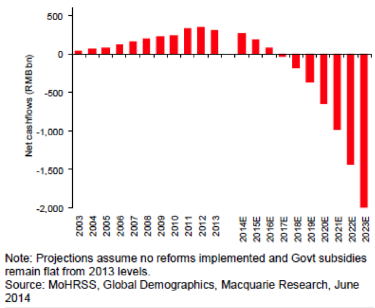
How people save for retirement will have to change in a world in which employment will be less stable, people will be living longer and governments won’t have the resources to support senior citizens. The financial community must think through this challenge and develop lean, high-return and long-term strategies for the greater good.
Have impact investing yield greater impact. Impact investing, the idea of producing marketlike returns on social enterprises, is intuitively appealing. Yet in practice, attaining such a goal is very challenging. There has not been as much progress made in impact investing as there has been excitement about it. According to the World Economic Forum, there has been less than $40 billion committed to impact investments, despite market projections that the asset class will exceed $500 billion by 2020. Although 80 percent of U.S.-based pension fund managers are familiar with impact investing, only 9 percent surveyed felt that it is a viable investment approach, according to the WEF.
Targeted Net Internal Rate of Return of Impact Investment Funds
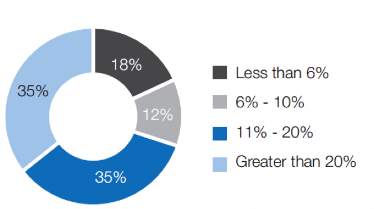
Source: World Economic Forum
Impact investing can be a critical element of the sustainable development agenda, but it requires focus. Impact investors need to show scalable and repeatable investment processes, prioritize key sectors and regions that are ripe for this type of capital and work with development groups to bring more financeable projects to the market.
Set a price on carbon. Climate change is no longer a controversial topic. Political leaders from both sides of the spectrum, from former Treasury secretary Henry Paulson, a Republican, to former vice president Al Gore, a Democrat, have elucidated the critical challenges brought about by climate change. Of climate scientists, 99 percent believe that man has altered climate patterns and caused global warming. The U.S. military, for its part, has called climate change one of the biggest threats facing humanity. Businesses and governments need to adopt systems, such as cap-and-trade and carbon taxes, to help coax business players into emitting less carbon into the atmosphere. The cost of inaction on climate change, which will easily be in the trillions of dollars by the end of the century, will be higher than the cost of strategic action and economic transformation. We have the technologies to both adapt and mitigate the effects of climate change. The financial community needs to help fund these new technologies and bring them to scale.
Carbon Emissions Baseline Scenario 2010–’50
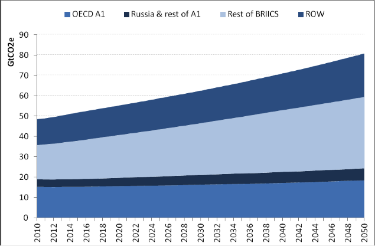
Source: OECD
Promote further internationalization of assets. There is a mismatch between global savings and global investment needs that is slowly being corrected. Today, U.S. institutional investors have less than 10 percent of assets allocated to emerging markets, despite the fact that emerging economies make up more than 50 percent of the world’s gross domestic product, and their growth continues to outpace that of developed markets. The unleashing of global assets from developed to developing countries will foster the entrepreneurial spirit and abilities that exist in many capitally starved economies.
Aniket Shah is an investment specialist with the Investec Investment Institute, part of Investec Asset Management, in New York.
See Investec’s disclaimer.
Get more on emerging markets and on macro.


